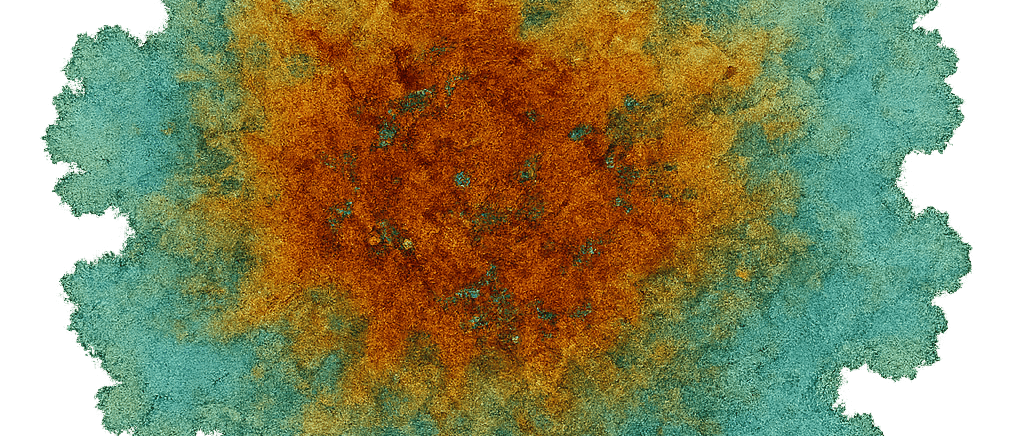Breaking the Acid Stain Myth — Why We Don’t Paint Cement, We Grow It
Real color doesn’t sit on the surface — it grows from within. This piece reveals the difference between corrosive acid stains and living reactive patinas. It’s a call to move beyond quick fixes and rediscover the natural chemistry that lets concrete bloom with color, patience, and respect.


The Misunderstanding That Shaped a Generation
When people hear “coloring concrete,” most imagine acid stains — bottled products that promise “stone-like effects” or “aged finishes.” For decades, the decorative concrete industry sold acid staining as alchemy, but behind the mystique was a misunderstanding.
Acid stains were never true patinas. They etched. They bit. They burned away what little surface chemistry cement offered. The acids dissolved the very minerals that could have formed real, reactive color.
In the rush for fast results, something essential was lost — the dialogue between material and maker.
The Difference Between Destruction and Dialogue
Reactive patination, unlike acid staining, doesn’t attack the surface — it collaborates with it.
Cement, when young and full of calcium hydroxide, is naturally alkaline. That alkalinity is not a flaw; it’s an invitation. It’s what allows metal salts — copper, iron, manganese — to bloom into color. Where acid stains corrode, reactive patinas cultivate.
Acid stains say: “Strip the surface so I can deposit my pigment.”
Reactive patinas whisper: “Let’s see what the minerals here want to become.”
This is the fundamental shift — from control to conversation, from corrosion to creation.
Color That Grows, Not Coats
When a reactive salt meets an alkaline surface, chemistry begins to write its story. Copper turns to turquoise, iron to rust, manganese to violet-black. Each reaction is part of a living process that continues even as the surface dries and breathes.
You can’t bottle that.
You can’t replicate it perfectly.
And that’s the beauty of it.
Reactive patinas don’t cover cement — they live within it. The color becomes part of the material’s mineral structure, bound through moisture, pH, and time. Every bloom, streak, and ghosted layer is unique, like a fingerprint of chemistry.
The Philosophy of the Alkaline
In the world of Reactive Patinas™, alkalinity isn’t a technical detail — it’s a philosophy.
The Earth itself works this way. The red deserts of Australia are iron reacting with air and water. The greens of copper roofs and the violet-black of stone deposits all come from slow, patient reactions between minerals and the environment.
Reactive art simply continues that natural conversation — guided now by hands, tools, and curiosity. It’s the difference between forcing a finish and fostering a relationship.
When we say, “We don’t paint cement, we grow it,” we mean that literally. The surface becomes a living landscape, coaxed to maturity through time, moisture, and breath.
The Artist as Alchemist
To work reactively is to let go of predictability. You prepare your surface, mix your solutions, and watch them bloom — not as a painter watching paint dry, but as a gardener watching life emerge.
Every variable — temperature, humidity, pH, surface texture — changes the outcome. That’s not a problem. That’s the point.
Because where acid stains offer control, reactive patinas offer wonder.
The Future Belongs to the Curious
The Reactive Patinas™ approach invites artists, designers, and makers to reimagine what cement can be. It’s not a blank, lifeless surface — it’s a reactive canvas, waiting for chemistry to wake it.
As the book Reactive Patinas™: The Art & Chemistry of Coloring Cement reveals, the future of decorative cement isn’t in bottled products or pigment charts. It’s in understanding the material itself — its breath, its minerals, its mood.
When you stop trying to coat concrete and start learning to grow color from within, you realize something profound:
The art was already there. You just had to invite it out.
✨ Reactive color isn’t applied — it’s revealed. Explore the science, the story, and the slow art of chemistry in our upcoming book.